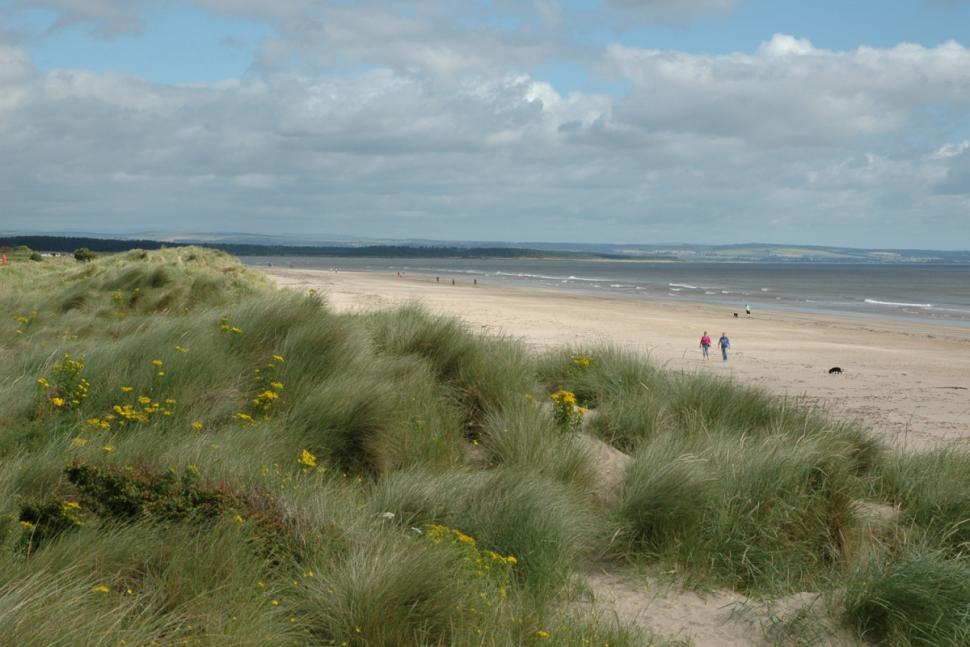
The Canadian province of Alberta has most of the world's reserves of natural asphalt in the Athabasca oil sands, which cover 142,000 square kilometres (55,000 sq mi), an area larger than England. Its viscosity is similar to that of cold molasses while the material obtained from the fractional distillation of crude oil boiling at 525 ☌ (977 ☏) is sometimes referred to as "refined bitumen". Naturally occurring asphalt is sometimes specified by the term "crude bitumen". Colloquially, various forms of asphalt are sometimes referred to as "tar", as in the name of the La Brea Tar Pits, although tar is a different material. To help avoid confusion, the phrases "liquid asphalt", "asphalt binder", or "asphalt cement" are used in the U.S. For the manufactured material, which is a refined residue from the distillation process of selected crude oils, "bitumen" is the prevalent term in much of the world however, in American English, "asphalt" is more commonly used. Worldwide, geologists tend to favor the term "bitumen" for the naturally occurring material. In material sciences and engineering, the terms "asphalt" and "bitumen" are often used interchangeably to mean both natural and manufactured forms of the substance, although there is regional variation as to which term is most common. Its other main uses are for bituminous waterproofing products, including production of roofing felt and for sealing flat roofs. The primary use (70%) of asphalt is in road construction, where it is used as the glue or binder mixed with aggregate particles to create asphalt concrete. The largest natural deposit of asphalt in the world, estimated to contain 10 million tons, is the Pitch Lake located in La Brea in southwest Trinidad ( Antilles island located on the northeastern coast of Venezuela), within the Siparia Regional Corporation. The word is derived from the Ancient Greek ἄσφαλτος ásphaltos. Before the 20th century, the term asphaltum was also used. It may be found in natural deposits or may be a refined product, and is classed as a pitch.

West Coast Sand & Gravel may also be known as or be related to West Coast Sand & Gravel and West Coast Sand and Gravel, Inc.The University of Queensland pitch drop experiment, demonstrating the viscosity of asphaltĪsphalt, also known as bitumen ( UK: / ˈ b ɪ tj ʊ m ɪ n/, US: / b ɪ ˈ tj uː m ə n, b aɪ-/), is a sticky, black, highly viscous liquid or semi-solid form of petroleum.

The data presented on this page does not represent the view of West Coast Sand & Gravel and its employees or that of Zippia. None of the information on this page has been provided or approved by West Coast Sand & Gravel. While we have made attempts to ensure that the information displayed are correct, Zippia is not responsible for any errors or omissions or for the results obtained from the use of this information. Sources of data may include, but are not limited to, the BLS, company filings, estimates based on those filings, H1B filings, and other public and private datasets. The data on this page is also based on data sources collected from public and open data sources on the Internet and other locations, as well as proprietary data we licensed from other companies. The employee data is based on information from people who have self-reported their past or current employments at West Coast Sand & Gravel. Zippia gives an in-depth look into the details of West Coast Sand & Gravel, including salaries, political affiliations, employee data, and more, in order to inform job seekers about West Coast Sand & Gravel.


 0 kommentar(er)
0 kommentar(er)
